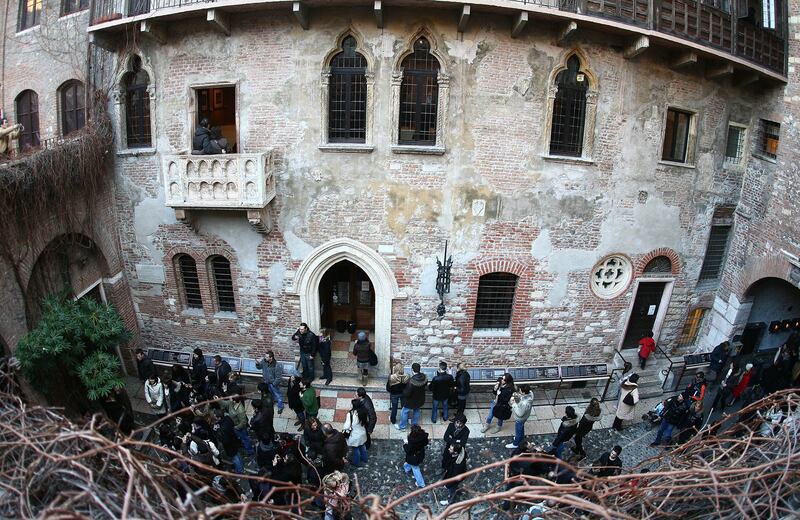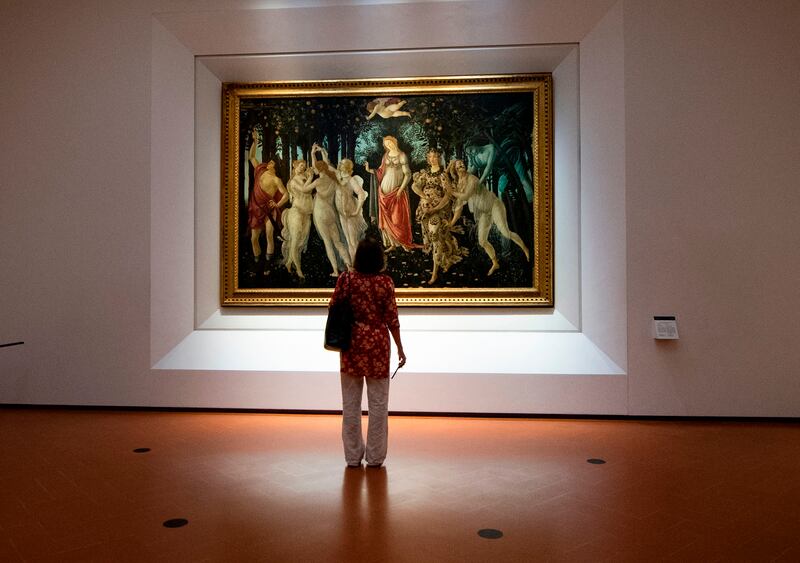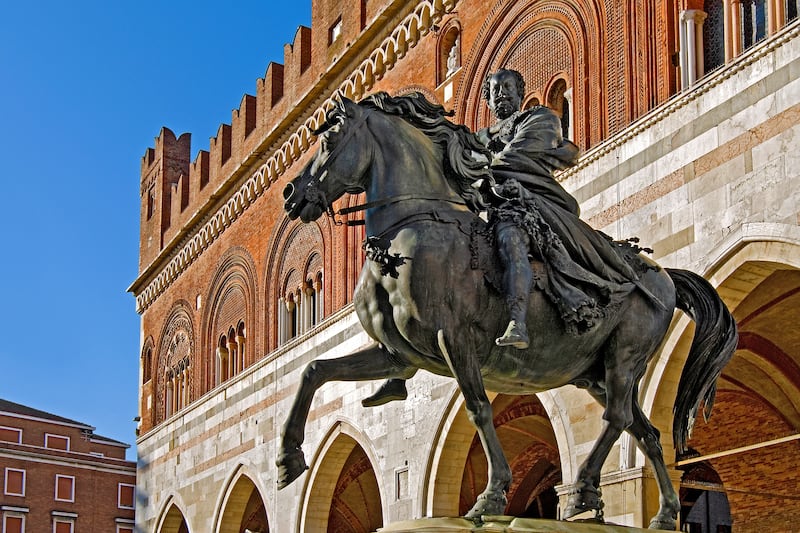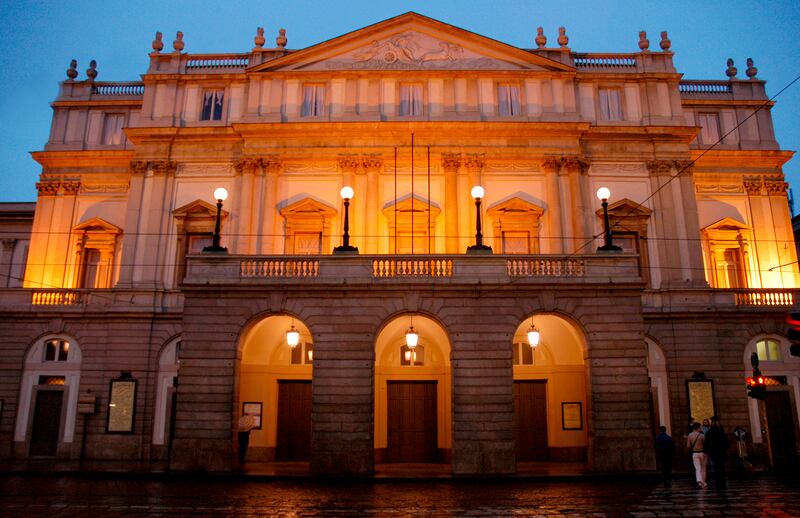Italian cities have some of the world’s most exquisitely detailed historic buildings, so visiting five cities in northern Italy in five days could initially seem to be a bit overambitious. But, in truth, our springtime trip to La Bella Italia all started with a geographical slip-up.
With plans to visit Florence and Bologna before going to stay with friends in Piacenza for a night or two, I impulsively bought very reasonably priced return fares to the tiny airport outside Verona (with a 15-minute bus ride to Verona train station) without fully scrutinising the map.
In that moment, our five-day itinerary switched from three cities to five – because who could resist a quick stop in the centre of Milan on our way back to Verona to catch our flight home? As regular visitors to Italy will know, one of its greatest attributes – aside from its unrivalled design and delicious food (be forewarned – online pre-booking is strongly advised for the best restaurants) – is its train system.
So, without further ado, we mapped out our trip, to stay one night in Verona, two nights in Bologna (with a day trip to Florence while there) and two nights in the lesser-known yet historically rich city of Piacenza. Train journeys between each city range from 45-90 minutes.
READ MORE
Best known for inspiring Shakespeare’s Romeo and Juliet play and its hugely popular summer opera festival, Verona is a stunning city, built on the bend in the river Adige with the snow-capped Lessini Mountains in the distance.
Partially destroyed during the second World War, the now Unesco World Heritage Site can thank Piero Gazzola – first president of the International Council on Monuments and Sites – for its beautiful restoration of Romanesque, Gothic, Renaissance churches and palazzi: the Piacenza-born architect oversaw the restoration of 150 sites between 1946 and 1956 in Verona, Mantova and Cremona.
Take a stroll across the old bridges to look back at the city’s historic core from the other side – you can easily walk between the castle, the Arena (the third-largest surviving Roman amphitheatre in Italy), the cathedral quarter and into the central city square, Piazza Dell’ Erbe.
[ A weekend in Krakow, where history hums below the city’s surfaceOpens in new window ]

Juliet’s house – with its much photographed balcony – is minutes away on the popular shopping street, Via Cappello. Verona also has numerous mansions – one of the most exquisite of which is Palazzo della Ragione, which houses the city’s modern art gallery. And although the collection of Italian art there won’t compare to those in larger cities, it’s a pleasant way to pass a few hours.
Arrive in Bologna on a Friday evening and, you will – like us – be charmed by the lively atmosphere in bars and restaurants sprinkled along the magnificent colonnades (or porticoes/portici in Italian) which define this exceptional city.
With the world’s oldest university, and almost 100,000 students, Bologna has a more lived-in feel than the more touristy Italian cities. Dubbed the red city both for its red roofs and leftist politics, it has become an international foodie city (spaghetti Bolognese, is of course one of the best-known pasta dishes). Check out non-touristy restaurants on the side streets and book ahead so as not to be disappointed.
The historic centre (centro storico) is compact to walk around, with spacious medieval squares to stop in between visits to the cloisters of the Santo Stefano monastery complex and the many churches. Bologna’s famous two towers (the Garisenda and Asinelli towers) in Piazza di Porta Ravegnana are currently closed to visitors, but art lovers will enjoy a visit to the museum in the home of Italian artist Giorgio Morandi (casa Morandi on via Fondazza). Morandi was best known for his landscape and still life oil paintings and some of his artworks appear in Federico Fellini’s famous 1960 film, La Dolce Vita.
[ Trek to Everest base camp: the impact of climate change is undeniableOpens in new window ]
Italian food lovers visiting Bologna with time to spare should check out the walking food tours where you can taste many Emilia-Romagna specialities including mortadella, balsamic vinegar, Parmesan cheese and parma ham.
Florence is a mere 40 minutes by train if you catch the fast Frecciarossa train. It’s about a 15-minute walk from the Santa Maria Novella train station to the magnificent marble-clad cathedral with its iconic red dome, free-standing bell tower and baptistery. Once in Piazza del Duomo, you can wander over the covered Ponte Vecchio, stroll along the Oltrarno (the left bank of the river Arno) to Palazzo Pitti and its elevated gardens (Gardino Boboli) to look back over the city and beyond into the Tuscan hills with their characteristic cypress trees.

Take the Ponte alle Grazie back across the Arno and you’ll find yourself in Piazza dei Giudici, next to the famous Uffizi galleries. Enthusiasts of Renaissance art should book ahead if keen to spend a morning or afternoon at the world-renowned Uffizi galleries where, at any time of year, you will join the throngs of people viewing some of the world’s most famous Italian paintings by Botticelli, Michelangelo, Da Vinci and Uccello.
The Uffizi galleries, which have late-evening openings in the summer months, were originally built in the 16th century as the administration offices (hence Uffizi) of the State of Tuscany, under Francesco 1 de Medici. Stroll into Palazzo Vecchio in Piazza della Signoria – next to Neptune’s Fountain – and you can get an overview of many of Florence’s beautiful churches before deciding which ones to visit.
The Palazzo Strozzi on Piazza degli Strozzi is another beautiful example of Florentine Renaissance domestic architecture. Its inner courtyard has a cafe, which is a perfect place to retreat after hours of walking. Palazzo Strozzi also hosts some excellent exhibitions of contemporary art and we were lucky enough to catch an engrossing show by German artist Anselm Kiefer, which continues until July 21st, 2024.
Wander around the streets of Florence in the evening when the tour buses have left and you’ll pick up some of the more local mood. Choose your restaurant off the main tourist streets and you’ll find yourself next to Florentines also enjoying the calmer hours of the day.
The stunning municipal building in Piazza dei Cavalli (Horses’ square) on its own makes a visit to Piacenza worthwhile. This Emilia-Romagna city is off the tourist trail but a stopover here gives you a true experience of life in northern Italy. Italian people in general – and especially in the north – are quieter than they were in the past and some suggest the prevalence of smartphones means people are busier checking their messages than chatting to each other.

In Piacenza, why not stroll through the city, enjoy lunch in a trattoria or an ice-cream in a gelateria, just like the locals do? Piacenza is home to one of the Eataly food and wine stores on Stradone Farnese. As well as being one of the best places to buy high-quality, fresh and dried pasta, cheeses, meats and various other Italian specialities, it has an extensive selection of wines and spirits. Check out the bar, cafe and restaurant once you’ve made your purchases.
And finally: Milan. En route back to Verona, we left our luggage in the bowels of the enormous arrivals hall in Milano Centrale train station and went on walkabout.
[ Prince’s Paisley Park: In Minneapolis, everyone’s got a Prince storyOpens in new window ]
It takes about 30 minutes to Piazza del Duomo (Cathedral Square) passing the famous La Scala opera house en route. A street exhibition on the construction of Milan’s huge Gothic marble-clad cathedral pays homage to the gargantuan task of excavating the marble blocks from the Candoglia quarries to build this towering structure over six centuries. With its gold-gilded Madonnina statue on top, Milan’s cathedral is the second-biggest Catholic cathedral in the world, surpassed in size only by Seville Cathedral in Spain.

A visit to the rooftops to view the thousands of gargoyles and statues close up will have to wait for another time as we are drawn into the magnificent 19th century glass-vaulted arcades of Vittorio Emanuele II, Italy’s oldest shopping street.
The red-bricked Sforza Castle, with its complex of museums, is also in walking distance of the city centre and well worth a visit. Stop off at one of the many side street cafes and you’ll be lunching next to lawyers, fashion buyers and designers as they go about their day.
Five days is not enough to truly soak up the atmosphere of these beautiful northern Italian cities, but each visit reminds you that you need to go back again soon.

















